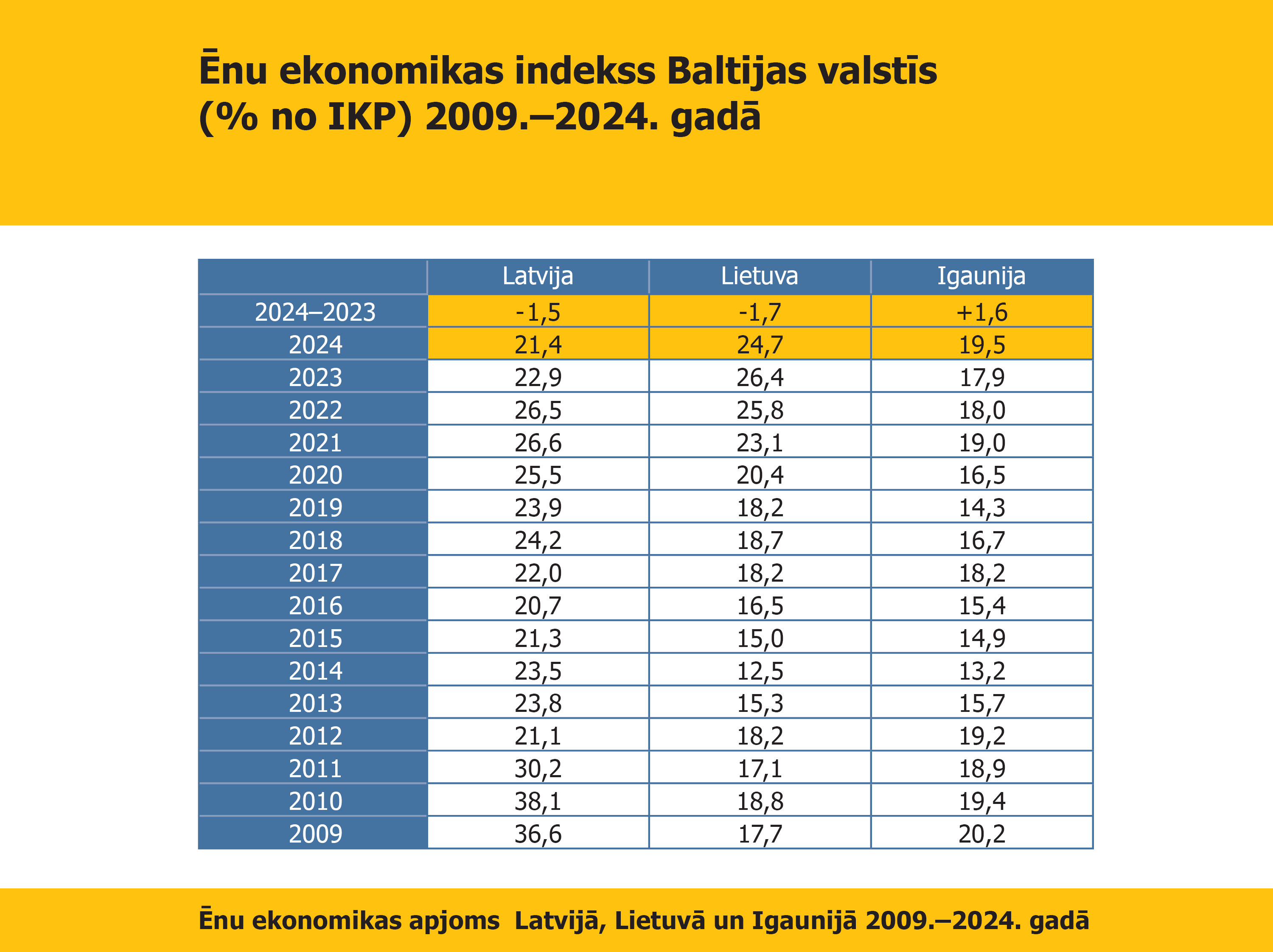Shadow Economy Index for the Baltic Countries
The aim of the Stockholm School of Economics in Riga (SSE Riga) "Shadow Economy Index for the Baltic Countries" is to measure and analyze the size of the shadow economies in Latvia, Lithuania, and Estonia, as well as to identify the main factors influencing participation in the shadow economy. The Index has been compiled annually since 2009.
On June 12, 2025, the annual results of the SSE Riga "Shadow Economy Index for the Baltic Countries" were presented.
According to the study, the size of the shadow economy in Latvia continued to decrease in 2024, reaching 21.4% of the country’s Gross Domestic Product (GDP). This is 1.5 percentage points lower than in 2023. A decline was also observed in Lithuania in 2024 – down by 1.7 percentage points compared to 2023, reaching 24.7% of GDP. In contrast, Estonia saw an increase in its shadow economy in 2024, rising to 19.5% of GDP, which is 1.6 percentage points higher than the previous year.

Video recording from June 12, 2025, when the fifteenth Shadow Economy Conference took place, with this year’s focus: “The Shadow Economy in Latvia – Is a Breakthrough in Reduction Possible?”. Conference held in Latvian.
The "Shadow Economy Index for the Baltic Countries 2009-2024" is available below in both Latvian and English.

